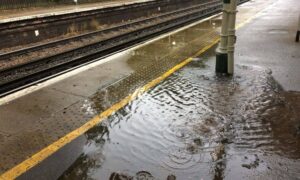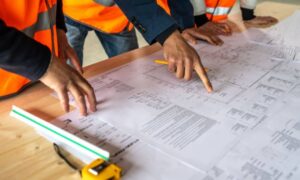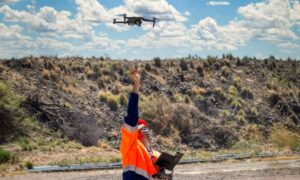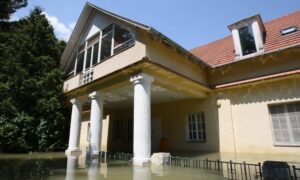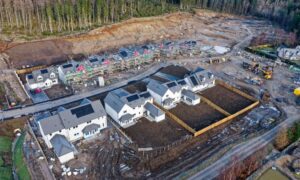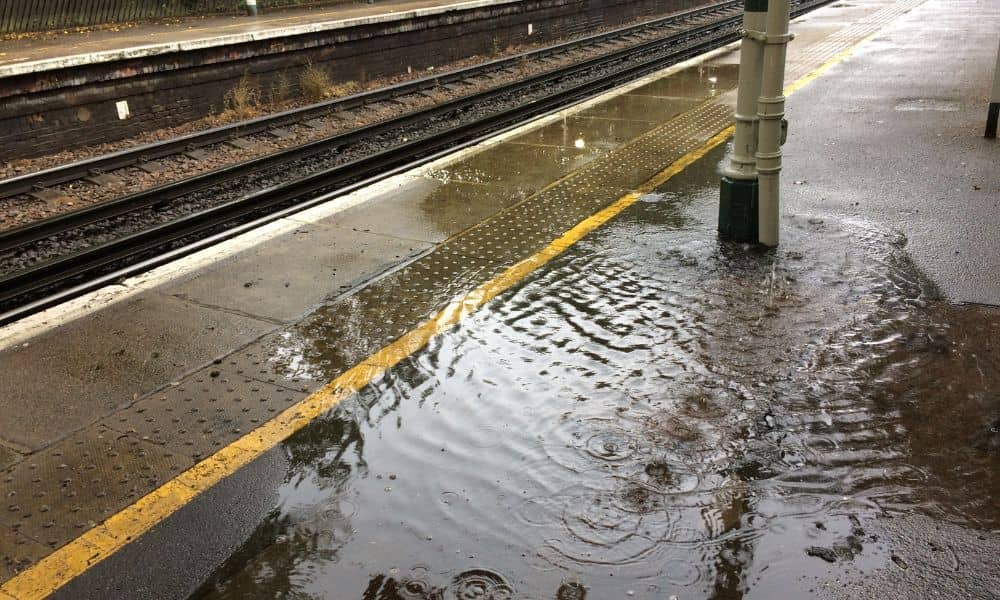
When the North Carolina State Auditor released a new report on Charlotte’s light-rail system, most of the headlines focused on security and crime. The audit came after a high-profile incident on the Blue Line, and the story spread quickly across local news and social media. But if you read between the lines, another issue jumps out drainage design.
Charlotte riders have been frustrated by flooded platforms, slick ramps, and storm drains that back up every time we get a heavy downpour. These problems don’t sound as dramatic as security gaps, yet they matter just as much for public safety. If a rider slips on a wet surface or if a ramp floods during a storm, the risk is real. And unlike crime, which is unpredictable, flooding is something engineers can prevent with the right design.
Why Drainage Design Equals Safety
Most people don’t connect drainage with safety until something goes wrong. But for anyone who takes the Blue Line on a rainy day, it’s easy to see the connection.
Standing water creates slip hazards on smooth concrete. ADA ramps that pool with water become dangerous for people using wheelchairs, walkers, or strollers. Flooded areas near electrical equipment threaten reliability of lights and security cameras. Even puddles at crosswalks can push riders into the street, where they face traffic risks.
That’s why the audit is more than a conversation about guards and cameras. It is a reminder that safety starts with engineering. Drainage design is invisible when it works, but everyone notices when it fails. And in a fast-growing city like Charlotte, stormwater problems multiply quickly as more pavement and rooftops funnel water into an already strained system.
The Local Challenge: Growth and Rainstorms
Charlotte has two big challenges when it comes to water. The first is growth. Thousands of people move here every year, and new buildings, parking lots, and roads change how rainwater flows. What used to soak into grass and soil now rushes across hard surfaces, heading straight into drains and pipes.
The second challenge is climate. Charlotte summers bring sudden thunderstorms that dump heavy rain in a matter of minutes. When older drains or small pipes can’t handle the volume, water has nowhere to go. That’s when you see ponding on platforms, mud washing onto sidewalks, and transit riders jumping over puddles.
Together, growth and storms create a perfect storm for engineers. Without smart drainage design, even new infrastructure falls behind.
Quick Fixes Charlotte Can’t Delay
The good news is that not all solutions take years or massive budgets. Many short-term fixes can be done in less than 90 days and still make a big impact.
One fix is re-grading platforms and sidewalks so water runs toward drains instead of pooling in low spots. Another is upgrading storm drain grates and inlets to capture more runoff and keep out trash that causes clogs. Adding trench drains along pedestrian walkways stops water from spreading across high-traffic areas. And by installing sediment traps at the entry to stormwater pipes, crews can reduce backups caused by dirt and debris.
These improvements may seem small, but they change how riders feel. A dry, safe platform sends a message that someone is paying attention. It tells the public that transit is cared for and that safety matters beyond just policing.
Longer-Term Solutions for Lasting Result
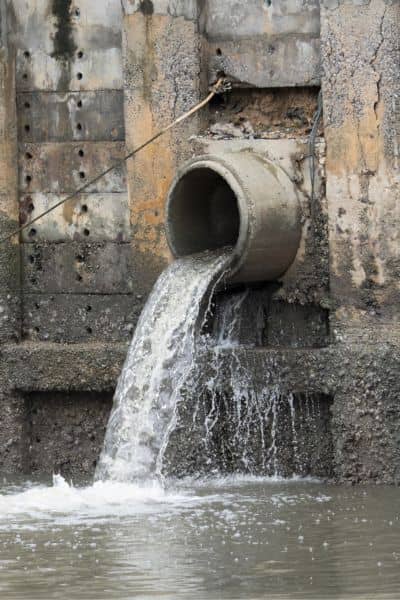
While quick fixes build confidence, Charlotte also needs a long-term plan. That means taking a deeper look at stormwater systems across the entire transit network.
Civil engineers are pushing for more detention pond design near rail corridors. These ponds hold back stormwater during peak rainfall, releasing it slowly instead of overwhelming drains. At the same time, green infrastructure like bioswales, rain gardens, and permeable pavers allow rain to soak back into the soil. These solutions don’t just manage water; they make stations more attractive and sustainable.
Roadway design also plays a role. Many stations connect directly to busy intersections. When curbs, ramps, and crosswalks are poorly graded, water flows right where pedestrians need to walk. Redesigning intersections with modern standards prevents water from collecting where it can cause accidents.
And because soil is mostly heavy clay, it doesn’t absorb water well. That’s why geotechnical engineering is critical. Data about soil type, permeability, and shrink-swell potential guides every good drainage design. Without it, even a new system might fail the first time a summer storm rolls through.
Why Businesses and Developers Should Care
It might sound like a transit-only problem, but drainage design affects every property. Developers, contractors, and property managers all face the same risks.
A shopping center with a flooded parking lot loses customers. A construction site with poor drainage risks erosion, schedule delays, and fines. A warehouse with clogged storm basins may face property damage and liability claims.
The CATS audit simply made these problems public. If one of the city’s most visible services can face this type of challenge, then private sites are even more vulnerable. For businesses, investing in proper drainage design isn’t just about compliance—it’s about protecting customers, tenants, and reputation.
How the Work Gets Done
Here’s the practical side: who actually carries out these fixes?
In Charlotte, much of the work happens through on-call contracts with civil engineering firms. This means the city already has agreements in place and can move quickly when problems are identified. Smaller firms often step in as subconsultants, offering specialized services like surveying, stormwater modeling, or site grading plans.
For engineers and contractors, this is an opportunity. As public demand for safer, more reliable infrastructure grows, so does the need for firms that can deliver fast, effective drainage solutions.
Measuring Success the Right Way
How will the public know things are improving? Success must be measured in ways riders and property owners can feel.
- Fewer complaints about standing water on platforms.
- Reduced slip and fall incidents, documented by the city.
- Better ADA compliance, confirmed by inspectors.
- Lower maintenance costs as pipes and equipment last longer.
- Positive rider feedback in surveys and social media posts.
These measurable outcomes matter because they build trust. And in a city growing as fast as Charlotte, public trust is the foundation for future investment.
A Safer Future for Charlotte
Charlotte’s future depends on infrastructure that works. Transit ridership will grow as the city expands, but only if stations remain safe, reliable, and welcoming. The recent audit proved that oversight is essential, but it also highlighted the importance of engineering.
Drainage design may not dominate the news cycle, but it plays a central role in daily safety. By acting on both short-term fixes and long-term planning, Charlotte can protect its riders, its reputation, and its momentum as one of the fastest-growing cities in the country.
Final Thoughts
The CATS audit is a wake-up call. While crime captured the headlines, the deeper story is about the systems beneath our feet. When drainage design fails, safety suffers.
For city leaders, developers, and business owners, the lesson is clear: don’t wait for an audit or an accident to force action. Invest in strong drainage solutions now. The cost of prevention is always less than the cost of repair—and far less than the cost of public trust.
Charlotte can’t afford to delay. The next storm will come, and the city must be ready.
